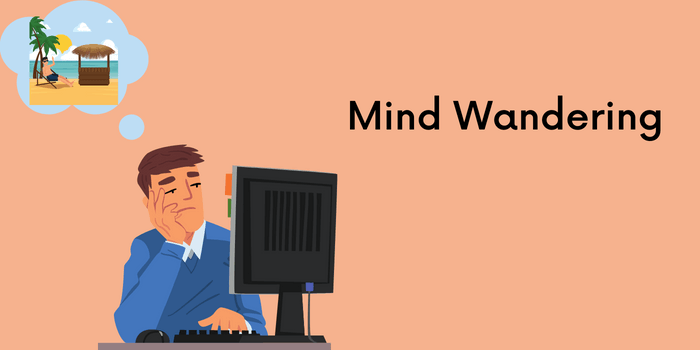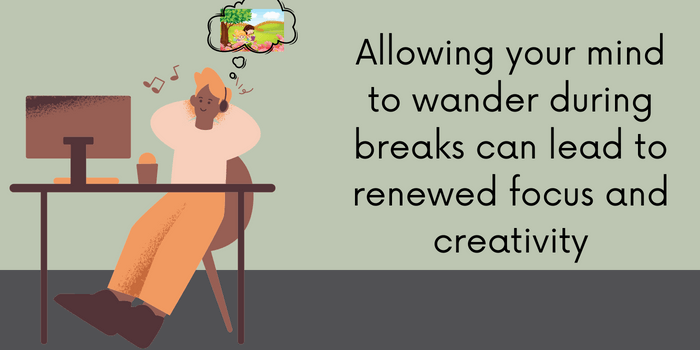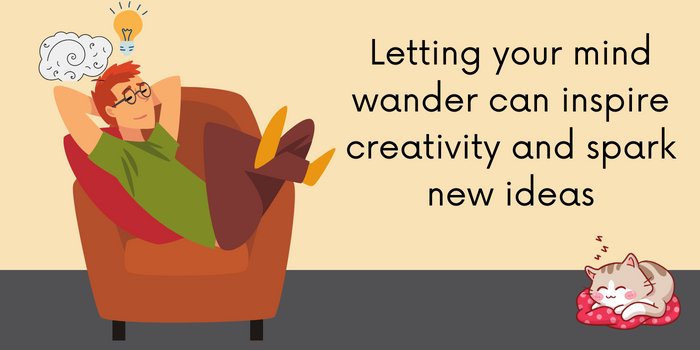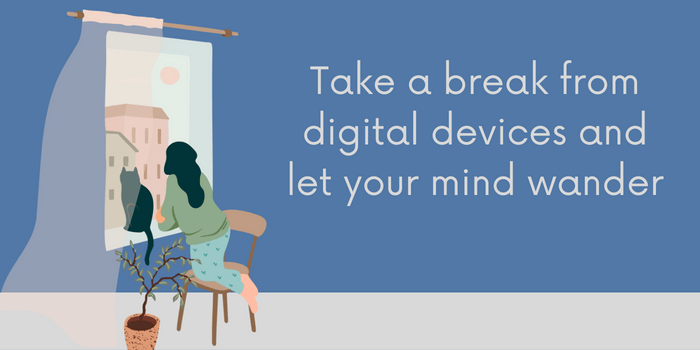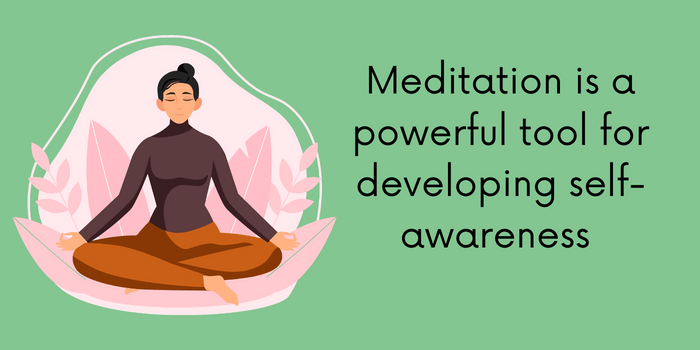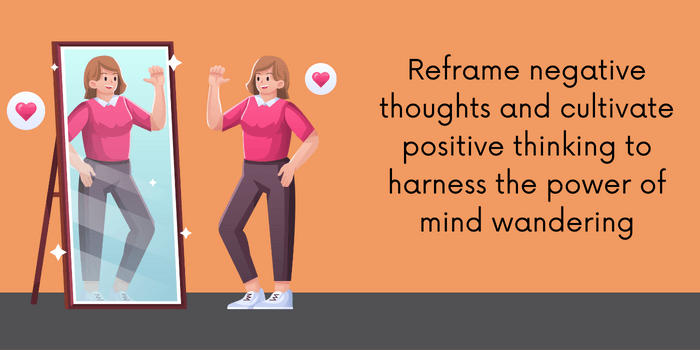Imagine sitting in front of your computer, trying to focus on an important task, and suddenly your mind wanders off, god-knows-where.
Before you know it, hours have passed, and you haven’t made any progress on your work. It’s a frustrating experience that most people have had at least once in their lives.
But what if I told you that mind wandering is not all bad? What if I said that you could learn to harness the power of your wandering mind to boost your creativity and productivity?
What is mind wandering?
Mind wandering is a natural phenomenon that occurs when our minds drift away from the task at hand and move into an internal stream of consciousness. It can happen when we’re bored, tired, or overwhelmed, and our thoughts start to wander off in different directions.
Psychologists define mind wandering as a shift in attention from external stimuli to internal thoughts or feelings. While mind wandering has traditionally been viewed as a negative aspect of our mental state, recent research suggests that it can have many benefits.
Benefits of mind wandering
Mind wandering has several benefits, both psychological and creative.
When we let our minds wander, we give our brains the chance to rest and recharge, which can help us be more productive and focused.
Additionally, mind wandering can improve our problem-solving abilities by allowing us to think creatively and make connections between seemingly unrelated concepts. It can also inspire creative ideas, boost our imagination, and enhance our memory.
Psychological benefits of mind wandering
Here are some of the psychological benefits of mind wandering.
Increased productivity and focus
Many people believe that the key to productivity is staying focused and avoiding distractions at all costs.
As a society we place a high emphasis on productivity which often results in individuals continuing to work even when they notice a decrease in their pace or an increase in errors.
Taking breaks can actually aid in preventing such issues and ultimately enhance productivity. Research shows that taking breaks and allowing our minds to wander can actually increase the chances of goal-fulfillment.
Improved problem-solving ability
Research has shown that mind wandering may improve creative problem-solving. Diverse and intentional mind wandering is also beneficial for breaking through mental impasses, which leads to better creative performance.
When we let our minds wander, we can think creatively and make connections between seemingly unrelated ideas. This type of thinking can help us solve problems in innovative ways and come up with solutions that we may not have considered otherwise.
Creative benefits of mind wandering
Here are some of the creative benefits of mind wandering.
Creative inspiration and idea generation
One of the most significant benefits of mind wandering is its ability to inspire creative ideas and spark our imagination. When we let our minds wander, we can tap into our inner creativity and come up with new and innovative ideas.
Many famous artists, writers, and musicians credit their best work to their wandering minds. Albert Einstein reportedly came up with his theory of relativity while daydreaming about riding a sunbeam to the edge of the universe.
Boosting imagination and memory
In addition to creative inspiration, mind wandering can also boost our imagination and memory. When we allow our minds to wander, we engage our brains in a process called “mental time travel,” where we imagine ourselves in different scenarios or situations.
This type of mental simulation can help us remember things more vividly and improve our ability to imagine new ideas.
Practical tips to harness the power of mind wandering
Now that we have seen its benefits, how do we tap into its power without getting off track? Mindful, diverse, and intentional mind wandering is the key, rather than just slipping into undisciplined rumination.
To use mind wandering as a powerful tool, the following techniques can be of help.
Disciplined slack
One way to harness the power of mind wandering is to engage in “disciplined slack.” This involves taking regular breaks throughout the day and allowing your mind to wander during those breaks.
By scheduling these breaks, you can prevent yourself from getting distracted during work time while still allowing your mind to wander and recharge.
Break away from digital devices
Another tip is to break away from digital devices and engage in activities that promote mind wandering, such as reading a book, taking a walk in nature, or simply staring out the window. These activities give your mind the space it needs to wander and explore new ideas.
Make time for daydreaming
Making time for daydreaming is another practical tip to harness the power of mind wandering. Set aside a few minutes each day to simply let your mind wander and explore new ideas. This can be a dedicated time during your workday or a leisure activity like taking a bath or going for a walk.
Remember, this is not an invitation for negative rumination. If your mind keeps wandering off into the same negative place again and again, then it’s not constructive.
Exercises to develop and strengthen self awareness
By understanding your thought patterns and triggers, you can better control your wandering mind and steer it towards productive and creative thinking. Mindfulness exercises like meditation or journaling can help develop self-awareness.
This can also help identify and put a stop to negative rumination. As soon as you notice intrusive thoughts taking over, bring your attention back to the present moment. Mindfulness practice helps you develop the mental muscle for this.

Become A Morning Person Bootcamp
For calm mornings with a daily meditation & journaling routine
Techniques to break bad habits when mind wandering
Many people have a tendency to wander towards negative or unproductive thoughts, leading to anxiety, stress, and distraction. Techniques like reframing negative thoughts, positive self-talk, and gratitude practices can help break bad habits and steer your mind towards more productive and creative thinking.
Scheduling dedicated time
Scheduling dedicated time to mind wander is another practical tip. By setting aside a specific time each day or week for mind wandering, you can train your brain to become more focused and productive during work time while still allowing for creative exploration during break time.
Limiting distractions
Limiting distractions during mind wandering sessions is crucial to harnessing its power.
By eliminating external distractions like social media, emails, and phone notifications, you can give your mind the space it needs to explore and generate new ideas.
Utilizing a non-linear approach to ideas
Utilizing a non-linear approach to ideas is another way to harness the power of mind wandering. Instead of trying to force your mind into a linear thinking pattern, allow your thoughts to wander and explore different connections and ideas. This can help you generate new and innovative solutions to problems.
Acknowledging difficult or uncomfortable thoughts
Instead of avoiding difficult or uncomfortable thoughts, allow your mind to explore them and find new solutions or perspectives. This type of thinking can help you process difficult emotions and come up with creative solutions.
Conclusion
Mind wandering is not all bad, and we can learn to harness its power to boost creativity and productivity. By taking breaks, engaging in disciplined slack, and engaging in activities that promote mind wandering, we can unlock our inner creativity and generate new and innovative ideas.
Use techniques like mindful daydreaming, self-awareness, and non-linear thinking to train your brain to become more focused and productive during work time while still allowing for creative exploration during break time.
So, let your mind wander, and see where it takes you.

